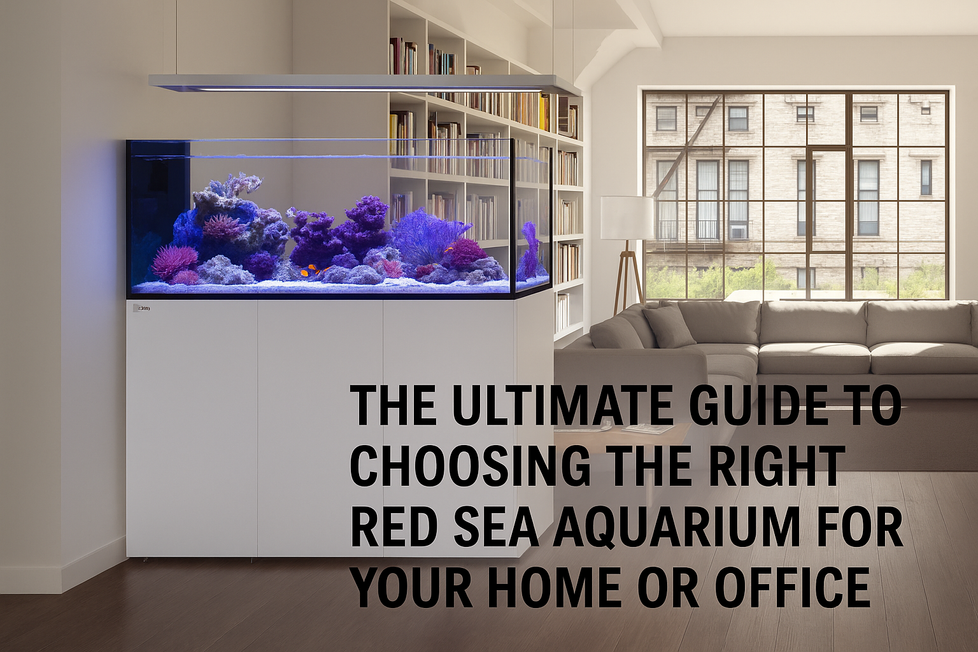Fluidised bed reactors (FBRs) are gaining popularity among aquarium enthusiasts for their efficiency in biological filtration. These reactors use a suspended bed of fine media to host beneficial bacteria, which break down waste products and improve water quality. This blog will cover the basics of fluidised bed reactors, their benefits, and how to integrate them into your aquarium setup. For top-quality fluidised bed reactors and other essential products, visit Charterhouse Aquatics.
What Are Fluidised Bed Reactors?
Fluidised bed reactors are advanced filtration systems that use a column filled with fine media, such as sand or small plastic beads. Water is pumped through the column, causing the media to become suspended or "fluidised." This movement maximizes the surface area available for beneficial bacteria to colonize, enhancing biological filtration.
Benefits of Fluidised Bed Reactors
1. Enhanced Biological Filtration
Fluidised bed reactors provide a vast surface area for beneficial bacteria, which efficiently break down ammonia and nitrites into less harmful nitrates. This process is crucial for maintaining a healthy and stable aquarium environment.
2. Space-Efficient
FBRs are compact and can be easily integrated into most aquarium setups, making them ideal for both small and large tanks.
3. Consistent Performance
The fluidised media ensures that bacteria are evenly distributed, leading to consistent and efficient filtration. This helps maintain stable water parameters and reduces the likelihood of ammonia or nitrite spikes.
4. Low Maintenance
Once set up, fluidised bed reactors require minimal maintenance compared to other filtration systems. Regular checks and occasional media cleaning are usually sufficient to keep the reactor functioning optimally.
How to Set Up a Fluidised Bed Reactor
1. Choose the Right Reactor
Select a fluidised bed reactor that matches the size and requirements of your aquarium. Consider the flow rate and volume capacity to ensure it can handle your tank's bio-load.
Recommended Product: D-D H2Oean Reactor - This versatile reactor is suitable for various aquarium sizes and offers efficient biological filtration.
2. Install the Reactor
Follow the manufacturer's instructions for installation. Typically, the reactor is connected to your existing filtration system using a pump or powerhead to ensure adequate water flow through the media.
3. Add the Media
Fill the reactor with the appropriate media. Options include fine sand, plastic beads, or specially designed bio-media. Ensure the media is evenly distributed to prevent clumping and ensure optimal fluidisation.
Recommended Product: D-D NutriFix Bio Media - This bio-media provides extensive surface area for beneficial bacteria, enhancing the efficiency of your fluidised bed reactor.
4. Monitor and Maintain
Regularly check the flow rate and condition of the media. Clean or replace the media as needed to maintain optimal filtration performance. Monitor water parameters to ensure the reactor is effectively controlling ammonia and nitrite levels.
Conclusion
Fluidised bed reactors are an excellent addition to any aquarium setup, offering superior biological filtration and low maintenance. By choosing the right reactor and media, you can create a stable and healthy environment for your aquatic life. For top-quality fluidised bed reactors and other aquarium products, visit Charterhouse Aquatics. Trust Charterhouse Aquatics to provide expert advice and the best products to keep your aquarium thriving.


